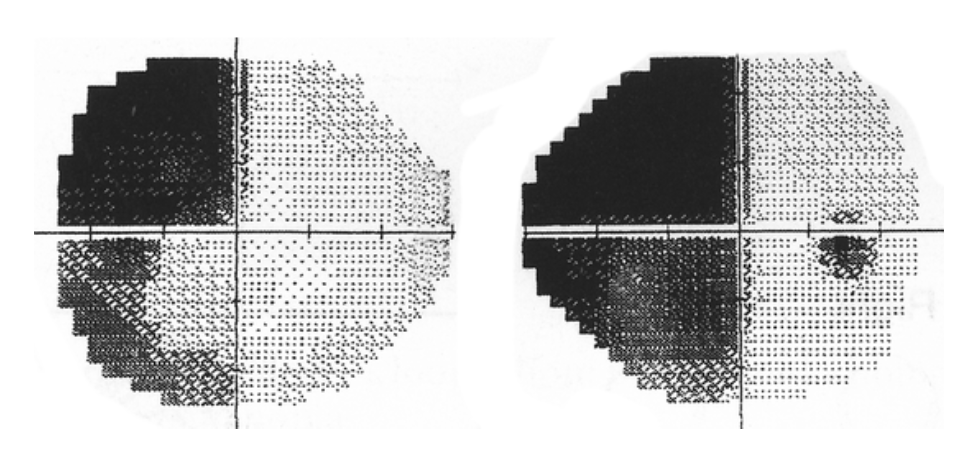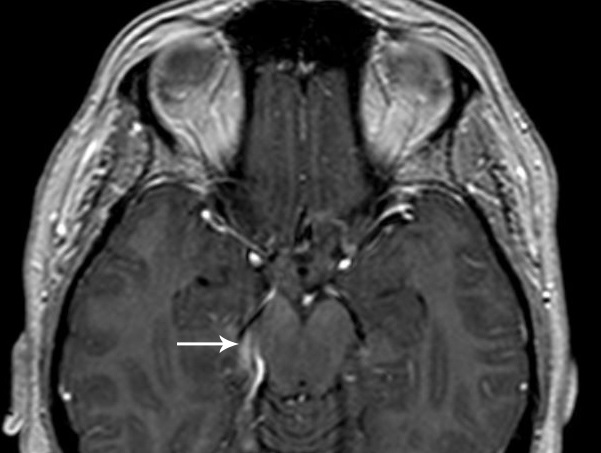( of )
Correct: 0
Incorrect: 0
A 29 year old woman noticed a defect in the vision of “my left eye” of uncertain duration. Optometric and ophthalmologic examinations were negative. The patient sought care from a neurologist for numbness in the legs, but the examination was normal. Because the vision defect persisted, the patient returned to the optometrist, who now performed a formal visual field examination that yielded this result.

Where is the lesion?
Incorrect
Correct!
 These visual field defects are confined to the left hemifields in both eyes and they have borders aligned to the vertical meridian, defining them as an incomplete “homonymous hemianopia.” But notice also that the defects in the two eyes are not of the same extent. If you overlaid them, they would not superimpose. This difference in the size of the two defects is called “incongruity.” If that incongruity is a true representation—and not simply an inconsistency in patient performance on the test—then the lesion must lie in the optic tract, where axons from corresponding points in the retinas of the two eyes have not yet come to lie close to one another.
After all, the optic tract is early in the retrochiasmal portion of the visual pathway, which carries out the transformation of visual representation in the brain from monocular to hemifield. As the axons proceed farther posteriorly, through the lateral geniculate bodies and optic radiations to visual cortex, axons from corresponding retinal points become neighbors and incomplete homonymous hemianopias become more congruous. By the way, why did the patient say that she had lost vision “in my left eye?” Because patients will almost always blame a homonymous hemianopia on the eye on the side of the hemianopia! In this patient, brain MRI disclosed enhancement in the right optic tract and other signal abnormalities consistent with multiple sclerosis.
These visual field defects are confined to the left hemifields in both eyes and they have borders aligned to the vertical meridian, defining them as an incomplete “homonymous hemianopia.” But notice also that the defects in the two eyes are not of the same extent. If you overlaid them, they would not superimpose. This difference in the size of the two defects is called “incongruity.” If that incongruity is a true representation—and not simply an inconsistency in patient performance on the test—then the lesion must lie in the optic tract, where axons from corresponding points in the retinas of the two eyes have not yet come to lie close to one another.
After all, the optic tract is early in the retrochiasmal portion of the visual pathway, which carries out the transformation of visual representation in the brain from monocular to hemifield. As the axons proceed farther posteriorly, through the lateral geniculate bodies and optic radiations to visual cortex, axons from corresponding retinal points become neighbors and incomplete homonymous hemianopias become more congruous. By the way, why did the patient say that she had lost vision “in my left eye?” Because patients will almost always blame a homonymous hemianopia on the eye on the side of the hemianopia! In this patient, brain MRI disclosed enhancement in the right optic tract and other signal abnormalities consistent with multiple sclerosis.

Incorrect
Incorrect